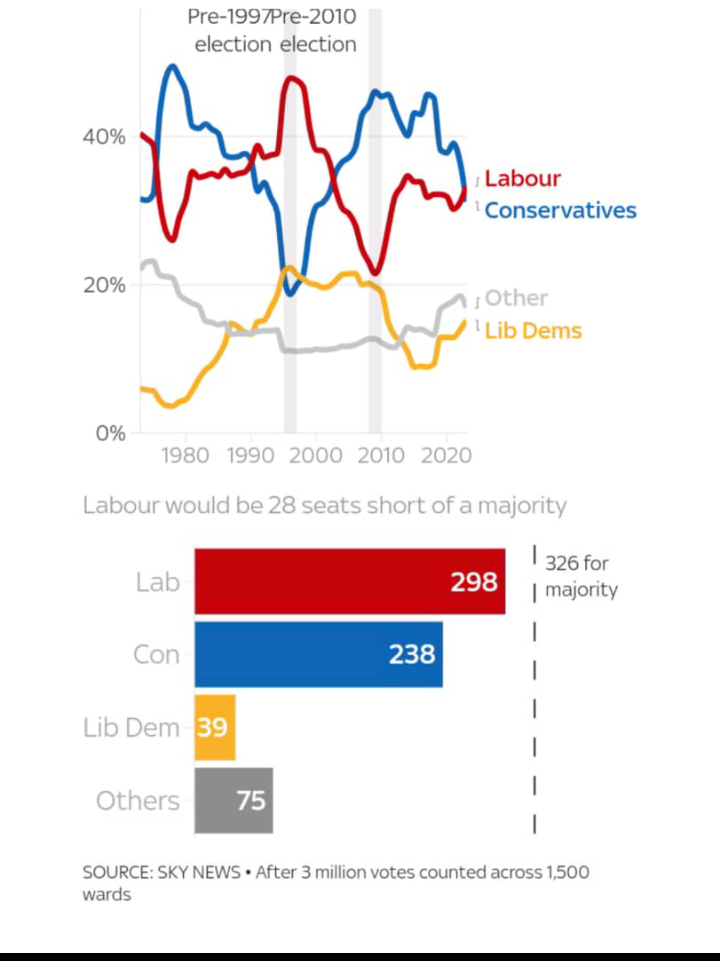Local Election Results 2023: Labour Surges, Conservatives Falter
In the recently concluded local elections, the Labour Party has emerged as the largest party in local government, overtaking the Conservatives for the first time since 2002. With over 500 seats gained by Friday evening, Labour achieved this significant milestone while the Conservatives endured a challenging night, losing more than 1,000 seats, meeting their worst pre-election expectations.
Labour’s Performance and General Election Prospects:
While Labour has made gains in crucial areas it needs to win back in a general election, doubts remain regarding whether the party has done enough to be on the verge of a return to government. Analysis by Sky News election expert Professor Michael Thrasher indicates that if the vote trends from these elections were repeated in a general election, Labour would fall short of a House of Commons majority by 28 seats.
Councils That Have Changed Hands:
Labour’s notable gains include Medway in Kent and Swindon in Wiltshire. Medway witnessed Labour securing a majority for the first time, while Swindon is an important swing seat and a key target for the party. Additionally, Labour has taken control of 19 councils, six directly from the Conservatives, and has come close to regaining control over two key red wall targets in the Tees Valley. However, they are currently one seat short of an overall majority in Darlington and Hartlepool.
Conservative Setbacks and Liberal Democrat Successes:
In contrast, the Conservatives have gained control of only two councils so far and lost control in 45 others across various regions. Notably, the Conservatives suffered their worst losses in the south, with the Liberal Democrats enjoying remarkable successes in areas such as Surrey Heath and Windsor and Maidenhead, where they wrested control from the Conservatives.
Labour’s Strongholds and Conservative Challenges:
Labour’s vote has seen an increase across the country, with the most significant rises observed in the north and midlands. Notably, Labour has been gaining support in areas that voted to leave the EU in 2016, often characterized by a higher number of working-class voters and fewer university graduates. On the other hand, the Conservatives have experienced declines in support in areas with younger, professional populations that predominantly voted Remain and have a higher number of graduate
The local election results demonstrate a resurgence for the Labour Party, positioning them in a much better place than their 2019 general election defeat. However, while they have become the largest party in local government, the question of whether Labour is doing enough to appear as a government-in-waiting remains. With the Conservatives facing setbacks in various regions, particularly in the south, and the Liberal Democrats making significant gains, the political landscape suggests a challenging environment for the current government. As we await further results and analyze voting patterns, it is clear that the political arena is evolving and presenting new dynamics for all parties involved.








